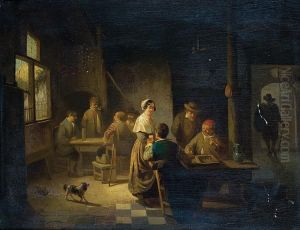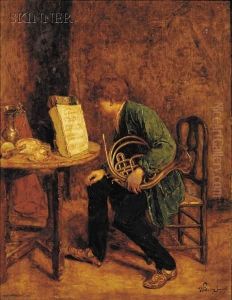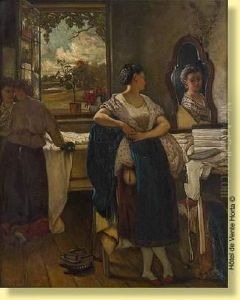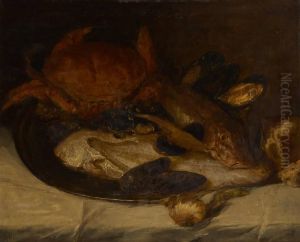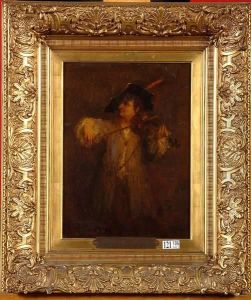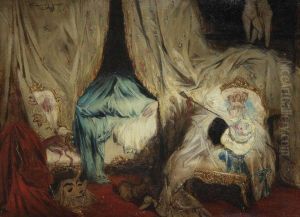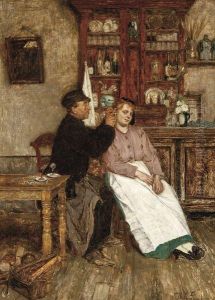Willem Linnig Jr. Paintings
Willem Linnig Jr. was a Belgian painter and engraver born on April 24, 1842, in Antwerp. He descended from a family deeply entrenched in the arts; his father, Willem Linnig Sr., was a respected painter and engraver, and his brother, Edouard Linnig, also pursued a career in painting. This familial background enveloped Willem Jr. in an artistic milieu from a very early age, fostering his development as an artist in a nurturing environment dedicated to the crafts of painting and engraving.
Linnig Jr.'s artistic journey was profoundly influenced by the vibrant cultural scene of Antwerp, a city renowned for its rich artistic heritage. He was educated at the Royal Academy of Fine Arts in Antwerp, where he honed his skills and absorbed the influences of the Flemish art tradition. His work is characterized by meticulous attention to detail, a deep appreciation for the Flemish masters, and a keen eye for capturing the nuances of daily life and historical scenes.
Throughout his career, Willem Linnig Jr. exhibited a preference for genre scenes, landscapes, and historical paintings. His ability to weave intricate details into his compositions, combined with a masterful use of color and light, earned him considerable acclaim. He was particularly interested in scenes depicting the lives of ordinary people, maritime landscapes, and episodes from Belgium's history, which he rendered with realism and empathy.
Despite his talent and the quality of his work, Willem Linnig Jr. did not achieve the same level of fame as some of his contemporaries. However, his contributions to Belgian art were recognized by his peers and art critics of his time. Linnig Jr.'s works were exhibited in various salons and exhibitions, both in Belgium and abroad, allowing his art to reach a wider audience.
Willem Linnig Jr.'s life was relatively short; he died on October 23, 1890, at the age of 48. Although his career was brief, he left behind a body of work that continues to be appreciated for its beauty, technical skill, and historical value. Today, Linnig Jr.'s paintings and engravings can be found in private collections and museums, serving as a testament to his skill and dedication to the art world of the 19th century.
